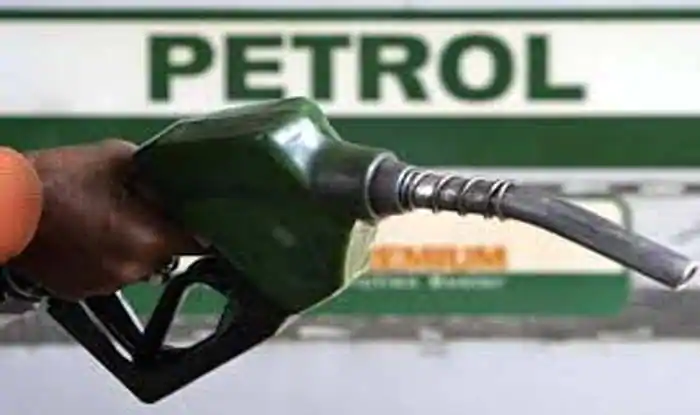PSM Rao
People demand satisfactory answers to these six questions to know why the petrol and diesel prices in India are again on the boil: 1) Is it because the international crude prices are skyrocketing? 2) Has the dollar price increased steeply, whereby more rupees are to be spent to get the same amount of crude? 3) Are the oil marketing companies in huge losses? 4) Is the government untenably burdened with a high petroleum subsidy whereby it wants to ease it through oil prices hike? 5) Or, is it the market that determines the price in which government has no role to play and therefore it has become a silent spectator when the prices unreasonably move upwards and forget to go southwards in tandem when the international prices fall? 6) Although people’s memory is short, they also want to know why the party now in power, which vehemently opposed the price hike when it was in opposition and which made the people believe that this opposing opposition would not allow the hike if and when it comes to power, is indulging in a steeper hike after coming into power, belying its supporters’ hopes? For sure, the government doesn’t have a ‘yes’ answer to any of these questions because there is enough evidence to refute all of them, one by one.
First, the international crude prices have not reached a never-before level although petrol prices have now reached close to `100 a litre in some states with the diesel prices moving in tandem. High import prices are no reason for the present hike. The Indian basket of crude cost was $ 54.79/ barrel (about 159 litres) in January 2021 when petrol, for instance in Delhi, was sold at `86.34. But it was higher at $ 111.59/barrel in September 2013 and petrol in the same city was sold at a lower price, `76.06.
Then the second presumption, the exchange rate must be higher than before making the crude costlier in rupee terms. No. Crude import price per litre was `46.94 when the rupee-dollar exchange rate was `66.89 in 2013 whereas in January 2021, the exchange rate was `72.90 and the per litre crude cost at that rate was `25.12.
Third, losses of oil marketing companies. No. No losses to them; the Petroleum and Natural Gas (PNG) statistics confirm that beyond any doubt. All the CPSEs under PNG Ministry earned a combined Profit After Tax of `69,714 crore in 2018-19; the profits have been constantly increasing for the seven-year period, for which the data is given, from `39,419 crore in 2012-13.
Fourth, subsidy burden on the government. No. Revenues to central and state governments keep rising continually as the 2012-13 to 2018-19 data compilation shows. As per the 2018-19 provisional figures, the state and central governments received: (i) Royalty from crude oil of `16,964 crore; (ii) Royalty from gas `2,364 crore; (iii) Oil Development Cess `18,984 crore; (iv) Excise & Custom duties `1,63,162 crore; (v) Sales Tax, `2,01,265 crore and (vi) Dividend `30,323 crore. All this sums up to `4,33,062 crore – a single-year revenue.
The subsequent revised figures have shown a still higher amount of `5,75,632 crore that year of which the centre’s share was `3,48,041 crore, equal to 22 per cent of its revenue receipts. The remaining `2,27,591 crore went to states which was equal to 8 per cent of their revenue receipts. That year, the Centre’s actual subsidy to the petroleum sector, as per the budget document, was `24,837 crore which equals 7.13 per cent of what it receives from the sector and 4.3 per cent of the total revenue of both centre and states together. This means that the government doesn’t give, but takes a lot from the industry.
The total government subsidy for fertilizer, food and petroleum was aggregated to `1,96,769 crore. This constitutes 56.53 per cent of central petroleum revenue and 34.18 per cent of the total petroleum sector’s revenue. This clearly shows that this sector meets the entire Centre’s subsidy burden; so, it would be wrong to say the subsidy to the sector is a burden on the government.
Fifth, the government is helpless; all this is the making of market forces. No. It could halt the prices although international crude prices went up during the election season. Strictly speaking, the government should not interfere with the prices after allowing them to the market control after discarding the administered price mechanism; but it did intervene and suspend the hike when it wanted. Also, the government can reduce the price through tax reduction if it wants.
Sixth, the ruling party, BJP, vehemently opposed when UPA hiked prices; it had protested inside Parliament and outside. The news archives are replete with the news of this opposition and agitation.
True, India heavily depends – up to 85 per cent – on imports for its petroleum needs; it produced only 32.2 MMT of crude in 2019-20 against 214.1 MMT consumption that year. Yet, that is no justification for the current price hike.
Imports are a burden, but India exports petroleum products, too. Putting its excess refining capacities to good use, in 2019-20, for instance, India refined 48.8 MMT crude than was domestically required. It had imported 262.9 MMT crude against 214.1 MMT consumption. It could thus export petroleum products worth $38.8 billion which accounts for 11.4 per cent of its gross exports value. The import bill of POL (Petroleum, Oil and Lubricants) that year was $119.1 billion, equal to 25 per cent of India’s gross imports.
So, while thinking of the costs, the export earnings and the domestic production of crude should also be factored in; not just the crude import cost. A democratic government should be transparent enough to share all the details with the people but should not scare them with misleading assertions and information. Also, the government should share with the people the profits it makes in different modes – tax and non-tax – by keeping the prices within the specified bounds.
Instead of indulging in mutual accusations and holding the opponents responsible for the price hike, the political parties and the governments should understand and accept that petroleum is a key and strategic industry with its interest being closely intertwined with public interest not only because of the high import dependence of the sector but because of its potential to increase overall inflation in the country with the resultant erosion of real incomes of people. No profiteering at the cost of public interest, please.
The writer is a development economist and commentator on economic and social affairs.

